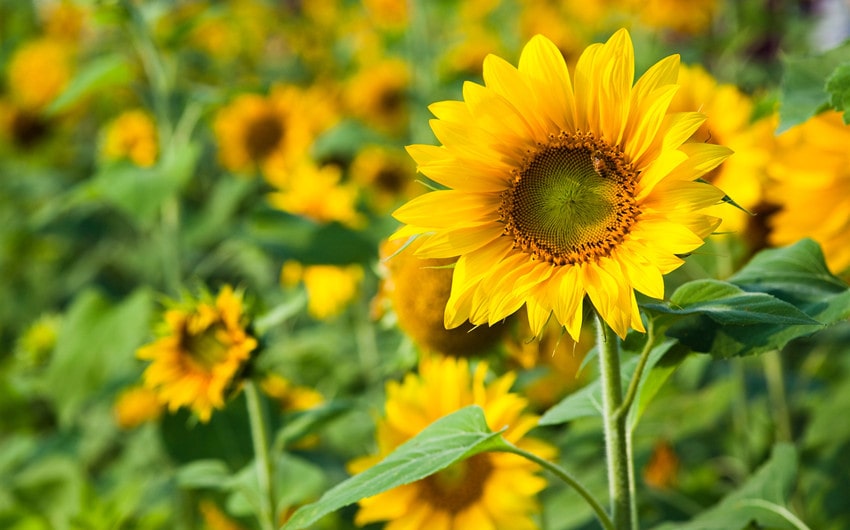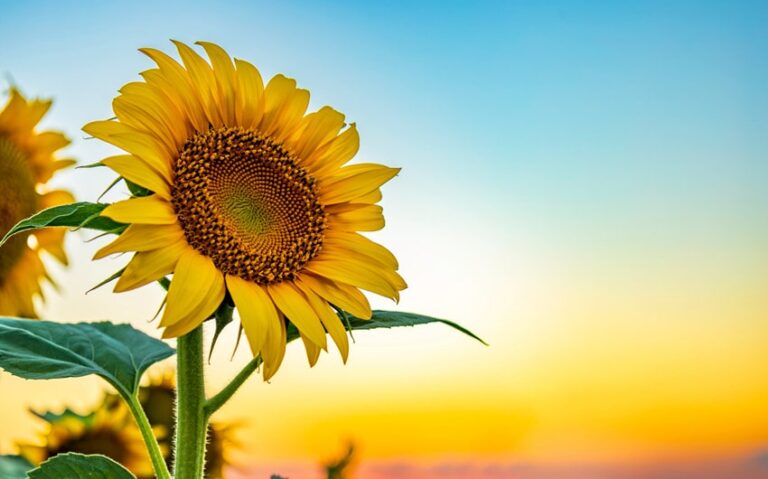Flowers That Represent Happiness: A Colorful Guide to Joyful Blooms
Flowers have a quiet magic. They brighten rooms, soften hard days, and speak a language of love, even without words. Across cultures and centuries, flowers have been used to express every shade of human emotion—from grief and longing to hope and pure joy. But some blooms seem to carry happiness in their petals. Whether it’s their color, their shape, or the feelings they evoke, certain flowers have become symbols of cheerfulness, positivity, and inner light. If you’re drawn to the idea of surrounding yourself with flowers that uplift the spirit, this guide is for you.
The Symbolism of Flowers and Human Emotion
Flowers have long been associated with symbolism. In Victorian England, floriography—or the language of flowers—was a powerful way to convey feelings that couldn’t be spoken aloud. Even today, gifting someone a bouquet is often more than just a kind gesture—it’s an emotional message. And happiness? It’s one of the most cherished sentiments you can express with blooms.
Colors play a big role in how flowers communicate joy. Yellows, oranges, and bright pinks often represent lightness and vitality. But it’s not just about appearance—it’s about the energy flowers bring. Some flowers remind you to breathe, laugh, hope, or start fresh. Below are some of the most iconic flowers that represent happiness—and how you can use them to invite more joy into your life.
Sunflowers – Brightness, Positivity, and Pure Joy
Few flowers embody happiness like the sunflower. With their golden faces turned toward the sun, sunflowers symbolize positivity, warmth, and vitality. In many cultures, they are seen as a sign of good luck and a reminder to stand tall and seek the light—even on cloudy days. Their towering height and bold presence make them almost impossible to ignore, just like genuine happiness.
Sunflowers are ideal for moments of encouragement. Whether you’re sending a get-well bouquet or decorating your space to boost your mood, they radiate energy and enthusiasm. Their cheerful demeanor is contagious, and having them around can be a daily reminder to keep your heart open and your spirit bright.
Daisies – Innocence, Cheerfulness, and Light-Heartedness
Daisies, with their simple white petals and sunny yellow centers, are symbols of innocence and pure joy. They evoke childhood memories, carefree afternoons, and uncomplicated laughter. In Norse mythology, the daisy was associated with Freya, the goddess of love and beauty—further tying it to themes of happiness and renewal.
Because of their unassuming charm, daisies remind you that joy doesn’t have to be loud. It can be soft, easy, and found in the little things. A bunch of daisies on your table or tucked into your hair can bring lightness to your day. They’re also a beautiful flower to gift when you want to say “I’m thinking of you with love and joy.”
Gerbera Daisies – Bold Color and Uplifting Energy
If regular daisies are soft-spoken, gerbera daisies are their vibrant, outgoing cousins. Known for their large heads and rich colors—hot pink, coral, orange, and yellow—gerberas symbolize cheerfulness and high-spirited joy. They’re often used to express feelings of admiration, gratitude, and emotional uplift.
Gerbera daisies are excellent mood boosters. Just looking at them can make a room feel more alive. They’re great for workspaces, celebrations, or any corner of your home that could use a jolt of color and confidence. If you’re going through a transition or celebrating a milestone, gerberas say: “You’ve got this—and joy is yours for the taking.”
Tulips – Spring Renewal and Gentle Happiness
Tulips are often associated with spring, and with it, the feeling of renewal, hope, and soft happiness. Their simple, elegant shape and pastel hues make them feel like a breath of fresh air. While red tulips are traditionally linked to love, yellow and pink tulips symbolize cheerfulness, affection, and a light-hearted sense of happiness.
Because they bloom early in the year, tulips carry the energy of new beginnings. They’re perfect for celebrating fresh starts—moving to a new home, starting a new job, or entering a new season of life. Place a vase of tulips near your window to bring in their gentle, encouraging energy each day.
Peonies – Prosperity, Romance, and Emotional Fulfillment
Peonies are lush, fragrant, and deeply symbolic of emotional richness and happiness. In Eastern cultures, they represent good fortune and a happy marriage. In Western traditions, they’re associated with bashful love, abundance, and healing. The layers of petals suggest fullness—both in bloom and in life.
Peonies are perfect for when happiness feels deep and grounded—like the joy of being surrounded by love or reaching a long-awaited goal. Their romantic energy also makes them a favorite for weddings and anniversaries. Whether displayed in your home or gifted to someone special, peonies say: “May your life be full and beautifully loved.”
Marigolds – Golden Energy and Vibrant Optimism
Marigolds, especially in shades of gold and orange, are radiant symbols of optimism and warmth. In many cultures, they are used in ceremonies and celebrations to honor joy, life, and brightness. While they also carry meanings of remembrance, their golden tones are deeply tied to vitality and cheerful energy.
Marigolds are especially powerful when used intentionally—lining a garden path, decorating an altar, or incorporated into seasonal rituals. They’re a reminder that happiness often comes from engaging with the world vibrantly, even boldly. Let marigolds encourage you to step into the sunlight of your own life.
Chrysanthemums – Lasting Joy and Everyday Cheer
Chrysanthemums, or “mums,” symbolize long life, joy, and emotional resilience. In some cultures, they’re associated with grief—but in others, especially in Asia, they represent endurance and quiet strength. Yellow chrysanthemums in particular are used to convey cheerfulness and well wishes.
These flowers are ideal for celebrating the everyday kind of happiness—the kind that shows up in routines, friendships, and moments of gratitude. Because chrysanthemums bloom in the fall, they remind you that joy can be found in every season, even as things change.
Yellow Roses – Friendship and Warm Emotional Sunshine
While red roses are often linked to romantic love, yellow roses are all about friendship, joy, and warm-hearted affection. They’re a classic way to say “thank you,” “I’m proud of you,” or “you brighten my life.” Their color resembles sunlight, and their meaning is equally radiant.
Yellow roses are a lovely choice for birthdays, celebrations, or encouragement. Keep them on your kitchen counter or gift them to a friend who needs a lift. Their beauty is both elegant and emotionally accessible—a reminder that happiness often lives in connection.
Lilies – Inner Peace, Hope, and Serenity
Lilies are serene, elegant flowers often associated with purity and peace. White lilies symbolize renewal and healing, while yellow lilies reflect joy and gratitude. Though their shape is more formal than other “happy” blooms, their energy is gentle, hopeful, and emotionally soothing.
Lilies are perfect for times of quiet reflection, spiritual renewal, or when you need calm happiness rather than excitement. Add them to a meditation corner or bring them to someone in recovery or transition. Lilies say: “Peace is part of your happiness, too.”
Daffodils – New Beginnings and Hopeful Joy
Daffodils bloom in early spring, often bursting through the soil just as winter ends. Their bright yellow faces are some of the first signs that warmth and color are returning to the world. That’s why they symbolize hope, resilience, and new beginnings.
Daffodils are a beautiful reminder that happiness often follows hardship. They’re perfect for encouragement, transitions, or welcoming a new chapter. Whether planted in a garden or placed in a vase, daffodils whisper: “Joy is returning—stay open to it.”
Zinnias – Bright Endurance and Sentimental Happiness
Zinnias are colorful, long-lasting flowers that bloom through the heat of summer. They’re associated with endurance, cheerfulness, and fond memories. With their varied colors and bold shapes, they bring vibrancy and heart to any space.
Zinnias are wonderful for anyone going through change or holding onto the memory of joyful times. Their brightness says, “Keep going.” Their presence reminds you that happiness isn’t always soft—it can be fierce, vibrant, and defiantly joyful, too.
How to Use Happy Flowers in Daily Life
- In your home: Place fresh blooms on your nightstand, dining table, or workspace to lift your mood.
- As gifts: Share happy flowers to celebrate, encourage, or simply say “you matter.”
- In rituals: Use petals in baths, altars, or journals as symbols of emotional nourishment.
- In your garden: Grow happiness from the ground up by planting blooms that bring you joy.
- With intention: Choose flowers based on what you need—lightness, calm, courage, or joy.
Final Thought
Happiness doesn’t always need words. Sometimes it blooms. In yellow petals, in fragrant air, in the gentle beauty of a flower that reminds you life can be joyful—even now. Whether you hold them, gift them, or grow them, let flowers become part of how you nurture your happiness. One stem, one bloom, one moment at a time.






